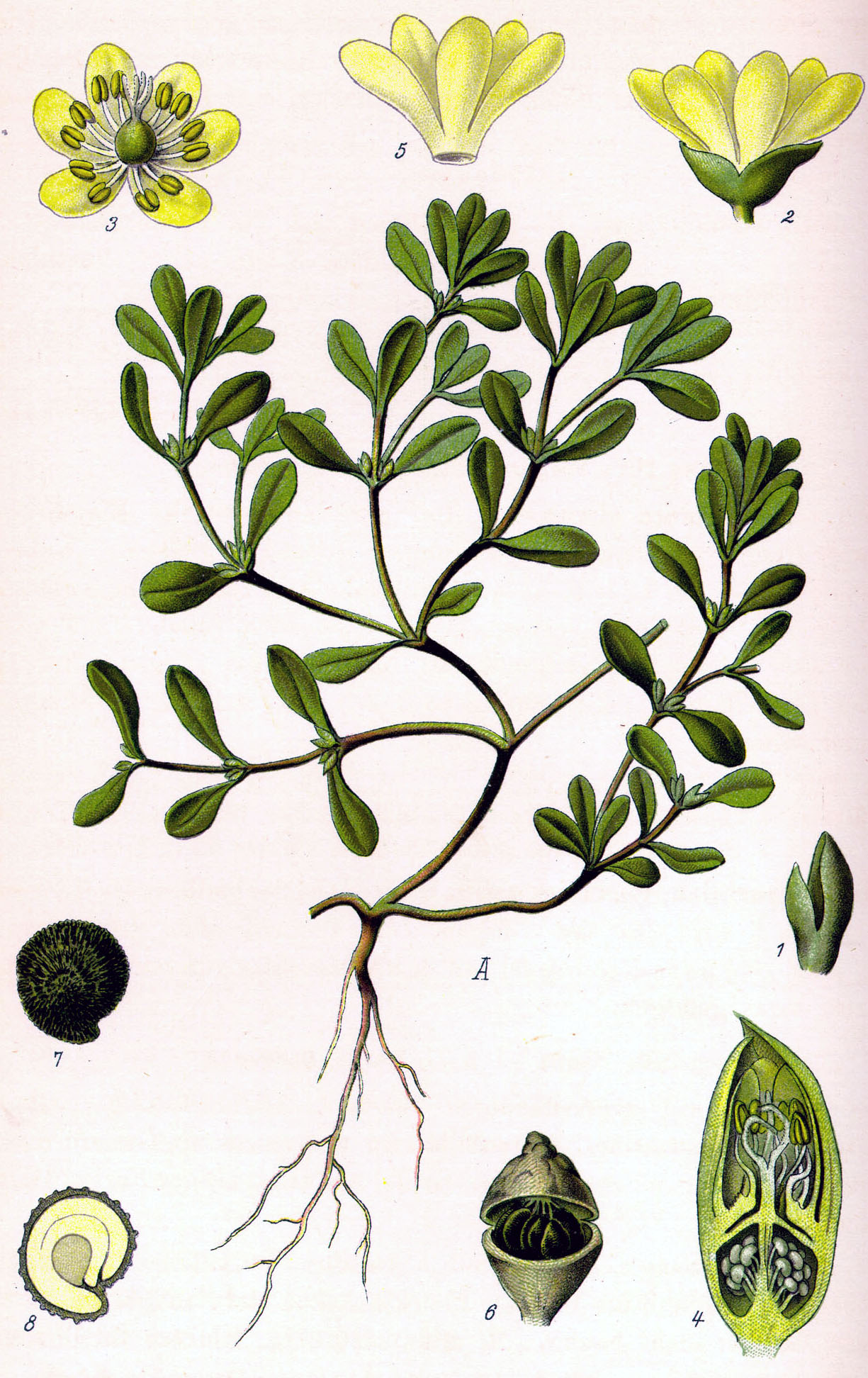Dies ist eine alte Version des Dokuments!
Portulaca oleracea L. - Portulacaceae - 马齿苋 ma chi xian (chin)., purslane, Portulak
Annual succulent herb, up to 40cm high; stems sometimes flushed red or purple; leaves alternate, short petioled, obovate; flower small, yellow.
„Danin et al. (Israel J. Bot. 27: 177–211. 1978) recognized a series of eight subspecies, but they are rather poorly correlated with geography and their status needs re-evaluation. The Chinese material seems to belong to the most common and weedy form placed in subsp. oleracea. There has been some selection of more robust forms for use as a vegetable; these are sometimes placed in subsp. sativa (Haworth). The plants, which are common weeds of cultivation, are eaten as a vegetable and used for medicinal purposes.“
http://www.efloras.org/florataxon.aspx?flora_id=2&taxon_id=200007020
„It has an extensive natural distribution throughout the Old World extending from North Africa through the Middle East and the Indian Subcontinent to Malesia and Australasia. The species status in the New World is uncertain… It is naturalised elsewhere and in some regions is considered an invasive weed… Although purslane is considered a weed in the United States, it may be eaten as a leaf vegetable. It has a slightly sour and salty taste and is eaten throughout much of Europe, the middle east, Asia, and Mexico. The stems, leaves and flower buds are all edible.“ http://en.wikipedia.org/wiki/Portulaca_oleracea
Portulak is rich in minerals (Calcium 65mg/100g), Magnesium 21mg/100g, Potassium 494mg/100g) and vitamins (ascorbic acid 21mg/100g).
http://ndb.nal.usda.gov/ndb/foods/show/3180?qlookup=11427&format=Full&max=25&man=&lfacet=&new=1
„An aqueous extract of the stems and leaves of Portulaca oleracea abolishes the twitch contraction of the directly stimulated rat hemidiaphragm preparation. The effects of the extract mimic qualitatively the action of potassium oxalate — a known constituent of Portulaca oleracea — on the diaphragm. Removal of K+ ions from the methanol extract by passing it through a cation exchange resin reduced the inhibitory effect of the extract. There was a positive correlation between the concentration of K+ ions in the extract and the effects of potassium chloride of similar molarity. It is concluded that the K+ ion content of Portulaca oleracea is at least partly responsible for the relaxant effect observed on the isolated rat diaphragm.“
[The skeletal muscle relaxant action of Portulaca oleracea: role of potassium ions., Parry, O., Marks, J. A., Okwuasaba, F. K., Journal of ethnopharmacology, Vol.40(3), 1993, 187-194]
„… Portulaca oleracea accelerates the wound healing process by decreasing the surface area of the wound and increasing the tensile strength.“
[Simple evaluation of the wound healing activity of a crude extract of Portulaca oleracea L.(growing in Jordan) in Mus musculus JVI-1., Rashed, A. N., Afifi, F. U., Disi, A. M., Journal of Ethnopharmacology, Vol.88(2), 2003, 131-136]
„Portulaca oleracea L. (POL) has been used as one of the traditional oriental medicines to treat bacteria, virus, antherasis, caducity, diabetes and for enhancing immunity. This study aims at revealing effects of POL on alloxan-induced diabetic rats and its mechanisms… The results indicate that POL would alleviate the blood glucose and lipid rising associated with diabetes, and improve the abnormal glucose metabolism and increase insulin secretion byrestoring the impaired pancrease β cells in alloxan-induced diabetic rats, which suggest that POL has the hypoglycemic potential and could be useful on the diabetes therapy.“
[Study on chemical constituents of Portulaca oleracea]., Yang, Z. J., Zheng, Y. N., Xiang, L., Zhong yao cai= Zhongyaocai= Journal of Chinese medicinal materials, Vol.30(10), 2007, 1248-1250]

